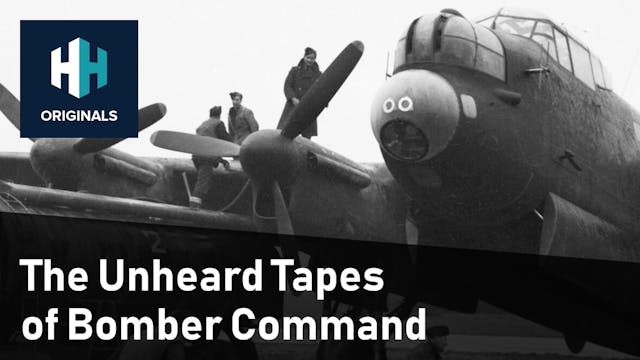SAS Shadow Raiders
World War Two
•
44m
In the winter of 1941 an alien-seeming object was spotted by an RAF reconnaissance pilot flying a lone unarmed Spitfire across the French coast. Balanced upon the cliffs near Le Havre was what appeared to be a giant convex dish, directed across the Channel at the war-torn British coastline. With Britain's cities being pounded by fearsome bombing raids, teams of experts studied the photograph worriedly. Might the dish constitute a highly secret form of radar - one that had the capacity to tip the balance of the war decisively in the enemy's favour? If so, Nazi Germany would have leapfrogged British technology many-fold. Damien Lewis explains the top-secret mission that was devised to steal what had become known as the 'Wurzburg Dish'.
Up Next in World War Two
-
The Unheard Tapes of Bomber Command
Over 55,500 men died flying with Bomber Command during World War Two; more than the number who serve in the Royal Air Force today. Flying at night over occupied Europe and battling German night fighters, anti-aircraft fire and mid-air collisions, they showed astonishing courage and resilience in ...
-
Forgotten Faces of the Great War: The...
China started out as a neutral country during the First World War. But by early 1917, one thousand Chinese men were on their way to the Western Front. Tens of thousands more would follow, to provide logistical support to the Allies. They constituted one of the largest labour corps of the war. The...
-
China's Forgotten War: Behind the Doc...
If the standout documentary from our East Meets West season, 'WW2: China's Forgotten War' has left you wanting more then don't miss this companion interview with Rana Mitter, Professor of the History and Politics of Modern China at the University of Oxford. Mitter, who presents the documentary an...



